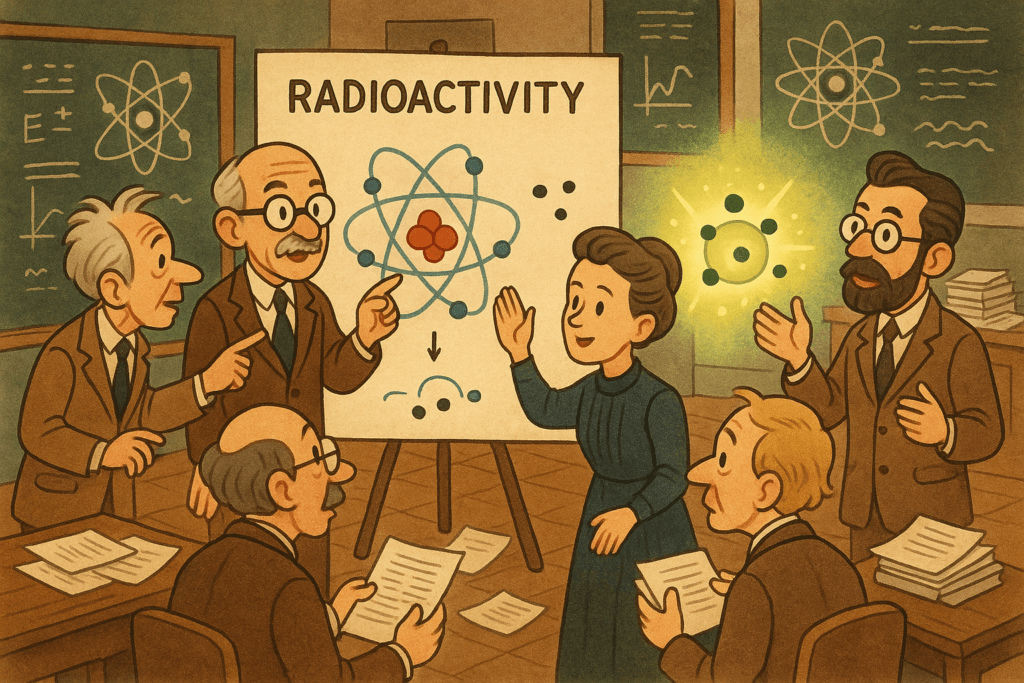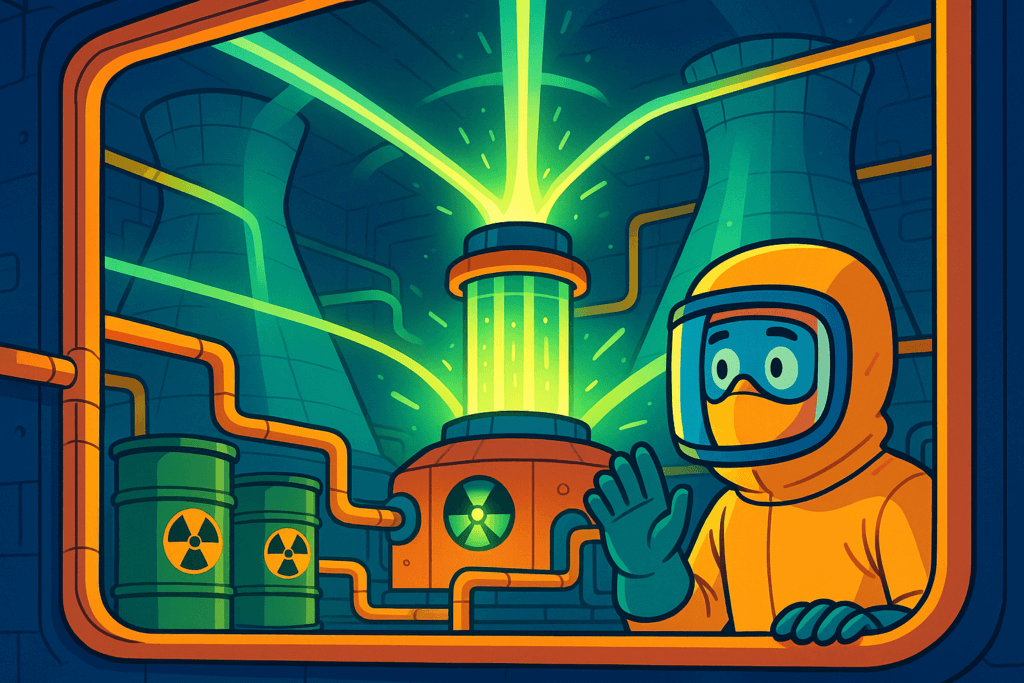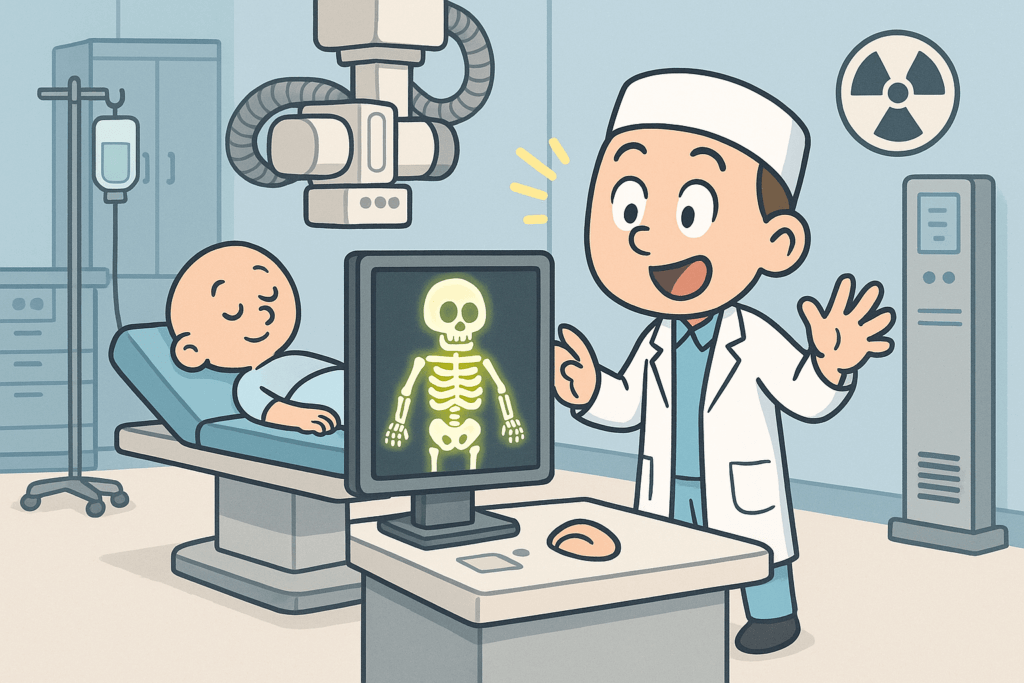The discovery of radioactivity is one of the most pivotal moments in the history of science. It opened up new realms of scientific understanding, affecting not just physics and chemistry but also medicine, energy, and even our day-to-day lives. The key figure behind this monumental breakthrough is none other than Marie Curie, whose tireless work in the field of radioactive elements led to an entirely new branch of science—radiology. This post explores the story of how the discovery of radioactivity changed the world, with a focus on Marie Curie’s extraordinary contributions.
What Is Radioactivity?
Before diving into Marie Curie’s journey, it’s important to understand radioactivity itself. In simple terms, radioactivity is the process by which unstable atomic nuclei lose energy by emitting radiation. This radiation can take the form of alpha, beta, or gamma rays, each with different properties. The phenomenon was first observed by Henri Becquerel in 1896, when he found that uranium salts emitted rays that could fog photographic plates. However, it was Marie Curie who truly unlocked the mystery behind these rays, changing the course of science forever.
Nikola Tesla: The Genius Who Electrified the World
Marie Curie and the Discovery of Radioactivity
Marie Curie, a brilliant physicist and chemist, was the first person to coin the term “radioactivity” to describe the phenomena she observed. Her groundbreaking work on uranium and its radiation led her to discover two new radioactive elements: polonium and radium. This was a huge achievement, as it was the first time that new elements had been discovered in centuries.
Marie’s research was driven by the desire to understand the properties of uranium, a substance whose rays seemed to have a mysterious power. Through meticulous experiments, she discovered that uranium itself emitted radiation and that this radiation was not dependent on the chemical form of the substance. This was a revelation—an entirely new physical phenomenon was at play, one that couldn’t be explained by existing scientific theories at the time.

Curie’s discovery of radium in 1898 was particularly important because it was far more radioactive than uranium, and its rays could penetrate substances in a way that was both mysterious and dangerous. Marie Curie’s discoveries not only challenged existing scientific models but also paved the way for future research in physics, chemistry, and medicine.
Nikola Tesla: The Genius Who Electrified the World
Impact on the Scientific Community
The discovery of radioactivity fundamentally changed how scientists viewed atomic structure and energy. Before radioactivity, scientists believed that atoms were indivisible and stable. However, the work of Curie and others shattered this notion. The idea that atoms could break down, emit energy, and transform into other elements opened up entirely new avenues for research in atomic physics.
Curie’s work directly led to the development of nuclear physics, the study of the behavior of atomic nuclei, which would later play a critical role in fields like nuclear energy and nuclear medicine. The discovery of radioactivity also laid the foundation for quantum mechanics, which would dominate much of 20th-century physics.

Marie Curie’s Legacy in Medicine
One of the most significant impacts of the discovery of radioactivity was its application in medicine. Curie’s discovery of radium’s radioactive properties quickly led to its use in radiotherapy to treat cancer. Today, radiation therapy is one of the most common and effective treatments for various forms of cancer, and it all started with Marie Curie’s research.
Her work also led to the development of radiology, the use of radiation to view the inside of the human body. The ability to take X-rays, which was made possible through Curie’s discoveries, revolutionized medical diagnostics and continues to be a fundamental tool in modern medicine.
Marie Curie’s Nobel Prizes
Marie Curie’s work did not go unrecognized. In fact, she was awarded two Nobel Prizes in her lifetime: one in Physics (1903) shared with her husband Pierre Curie and Henri Becquerel for their collective work on radioactivity, and another in Chemistry (1911) for the discovery of the elements radium and polonium. She remains the only person to have won Nobel Prizes in two different scientific fields.
The Role of Radioactivity in Modern Science
The discovery of radioactivity has had a profound impact on numerous areas of science and technology. It has shaped our understanding of the universe, energy, and matter itself. Today, radioactivity is used in countless applications, from power generation in nuclear reactors to carbon dating in archaeology and even in smoke detectors. The understanding of radioactive decay also helps scientists in fields like astrophysics, where it plays a role in studying stars and cosmic events.

Conclusion
The discovery of radioactivity was not just a breakthrough in physics and chemistry—it was a turning point that reshaped the very way we understand the world around us. Marie Curie’s relentless pursuit of knowledge and her groundbreaking discoveries in the field of radioactivity revolutionized science, medicine, and technology. Her legacy continues to inspire generations of scientists and will undoubtedly remain a cornerstone in the study of atomic and molecular physics for years to come.
Frequently Asked Questions (FAQ)
1. Who discovered radioactivity?
Radioactivity was discovered by Henri Becquerel in 1896, but it was Marie Curie who extensively researched it and coined the term “radioactivity.”
2. How did Marie Curie contribute to the discovery of radioactivity?
Marie Curie discovered the radioactive elements polonium and radium and made significant contributions to understanding the phenomenon of radioactivity.
3. How has the discovery of radioactivity impacted medicine?
The discovery of radioactivity led to the development of radiotherapy, a key treatment for cancer, and the use of X-rays for medical imaging.
4. What are the types of radiation emitted by radioactive elements?
The main types of radiation are alpha rays, beta rays, and gamma rays, each with different properties and uses.
5. What are some modern uses of radioactivity?
Radioactivity is used in nuclear energy production, carbon dating, medical imaging, and radiation therapy.
